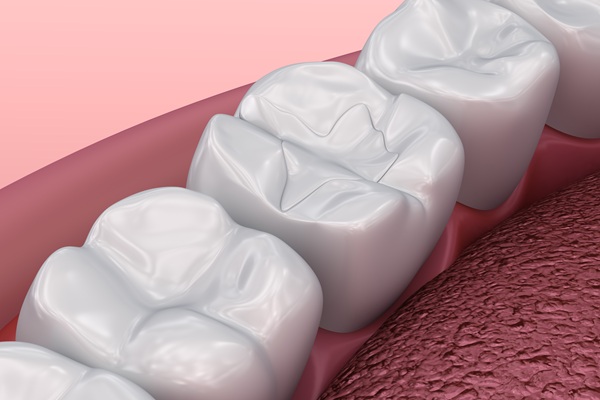Periodontal Treatment: Scaling and Root Planing Cleans Plaque From Tooth Roots Without Surgery

Looking for more information on periodontal treatment? Removing the plaque buildup on your teeth ensures good oral health. Plaque is a sticky film that covers the teeth. This stickiness encourages the buildup of bacteria as well as acid on the teeth, both of which cause harm to the teeth. Plaque that is not removed in a timely manner will eventually lead to tooth decay. A tooth decay diagnosis means that your teeth are in jeopardy. You should immediately seek treatment from a dental professional so that you do not risk losing them.
Types of periodontal treatment
Wanting to understand the types of periodontal treatment and the work involved with each type? There are four different stages of gum disease and all stages require dental treatment. The stage of the disease will determine the type of treatment required to remove the plaque buildup that is causing harm. Addressing gum disease in its beginning stages will often only require a dental process known as scaling and root planing. Gum disease that is in its advanced stages may require dental patients to undergo surgery to repair all the damage caused by the disease.
According to the American Dental Association, scaling and root planning is beneficial to patients with chronic periodontitis — a gum disease that has advanced past gingivitis.
Scaling and root planing
Scaling and root planing is a process that requires a dental professional to deep clean below the gum line to remove existing plaque from the teeth. The first part of the procedure is scaling, which includes removing all the plaque buildup above and below the gum line. This plaque removal allows the gums and teeth to immediately start the healing process, once again restoring health to the gums and teeth. The second part of the process involves root planing, which smooths out the affected tooth roots. This is to help the gums reattach themselves to the teeth.
Aftercare
After a patient has undergone the scaling and root planing process, they will need to closely follow a dental professional's aftercare instructions so they can experience a full and successful recovery. Experiencing slight pain for a day or two is common, as well as a little swelling and tenderness around the gum line. Some patients will receive an antibiotic rinse to eliminate the bacteria.
Are you currently living with plaque on your teeth?
Plaque in the teeth requires periodontal treatment. The longer plaque stays on your teeth, the more damage it creates to both your gums and your teeth, so you should have it removed as soon as possible. If the plaque on your teeth is minimal, then it is likely that you will only need to undergo the scaling and root planing procedure. Scaling and root planing generally does not take a lot of time to perform and should not cause patients any sort of discomfort or pain. Ready to schedule an appointment to remove your dental plaque?
Request an appointment here: https://www.oaktreefamilydental.com or call Oak Tree Dental at (703) 763-5239 for an appointment in our McLean office.
Check out what others are saying about our services on Yelp: Read our Yelp reviews.
Recent Posts
If you have a gap in your teeth, you may want to consider a partial denture for one missing tooth. The gap may be affecting your appearance and lowering your self-confidence. Even if the missing tooth is in the back and is not very noticeable, it is important to replace it because there are long-term…
While damaging a dental filling can be painful and problematic, it is also manageable with the right steps. A dental filling can restore the structure of a tooth after decay or minor damage. However, fillings can sometimes chip, crack, or even fall out due to daily wear, biting on hard foods, or unexpected trauma. Proper…
A missing tooth can increase the risk of developing gum disease and cause teeth around a gap to become misaligned. A partial denture for one missing tooth may be recommended as a fast and cost-effective solution.Most dentists usually recommend two options for a single missing tooth. The first option consists of a false acrylic or…
According to the American Dental Association, over 120 million people in the U.S. are missing at least one tooth. To rectify this, a partial denture for one missing tooth may be a solution. If you are considering getting a partial denture or already have one, it is important to understand the proper way to care…


